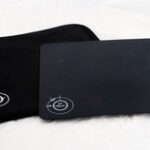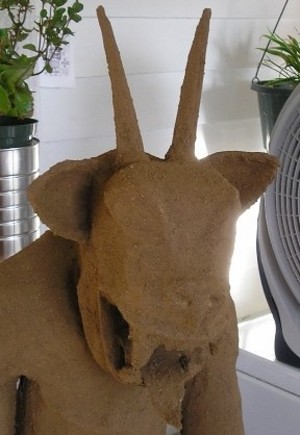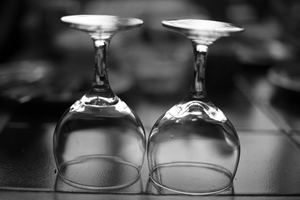A compost bin can be a perfect addition to your organic garden and creating a bin does not have to be expensive! There are many excellent reasons to create a compost bin. Composting is a great way to give back to the environment. Compost is a wonderful addition to the soil of your existing garden and is a huge help in replenishing the soil when rotating crops. In addition, if you are like me and your garbage disposal has the approximate power of a dwarf mouse, composting is a far easier solution to a stinky trash bin and much cheaper than replacing the garbage disposal.
I’m sure the compost tumblers sold at the garden centers work well, but they are far too pricey for this small yard gardener. After all, I got into gardening for yummy homegrown veggies, not for expesive purchases of soils, fertilizers, or tumbler compost bins. We’ve already learned that I’m too cheap to upgrade my garbage disposal so clearly I don’t want my garden to be a money sucking venture.
To create a garbage bin compost, you will need a large 32 gallon plastic garbage bin that is rounded and dark in color. I prefer the darker bins because they heat up faster in the sun. The garbage bin must have locking handles. The sturdier the bin, the better. You will also need an electric drill. Use the drill to puncture holes all over the garbage bin. Make it look like it has survived target practice from a really bad marksman. You can draw pictures or spell out words if you want, as long as the holes are numerous and completely cover the sides of the bin.
Now the bin is ready to be filled. Compost bins will work with a variety of materials, but for fastest composting, you will want to equally mix your “browns” with your “greens”. Greens are nitrogen rich items include freshly cut grass, pruned plants, used coffee grounds, tea leaves or vegetables and peelings. Browns are carbon rich and include paper, dried twigs, fall leaves, straw, sawdust, shredded newspaper or wood chips. A great addition to the bin is horse or cow manure from your local riding stable. Don’t hesitate to ask a local farm for manure. I assure you, most will happily give you all that you can use and gardens thrive on it. Manure is a green in case you were wondering. Things that you do not want to put in your bin are oil, grease, bones, fat, dairy products, meats, and diseased plants. Don’t worry too much about your mixture percentage. Compost will break down over time no matter what. If your percentages are off, it will just take a bit longer. Don’t worry about the smell either. Yes, at certain times of the cycle, the bin will give off a slight odor, but it is much less than you would expect even when you’ve added a lot of horse manure. If the bin is too smelly, chances are they you have too many greens or not enough browns.
When you have completely filled your bin, you will need to check it frequently. Add water whenever the contents are dry. Place it in the sun for fast heating, but don’t let it dry out or you will lose too many nutrients. Lay the bin on its side and roll it around daily or every other day. You did buy the bin with the locking handles, right? And.. that’s it!
Depending on your mixture percentage and the outside temp, you will have a fresh batch of compost in about 1-3 months. Once my bin is filled, I don’t add anything else until I’m ready to start again. I keep a small bucket on the side for my in between kitchen scraps. One of these days, I’ll break down and create another bin so I can have one composting while the other is being filled. You will know that your compost is complete when the contents of the bin are a dark brownish black and look like what comes out of the expensive soil bags sold at the garden centers. Now, simply apply it to your garden and enjoy the impressive results!



